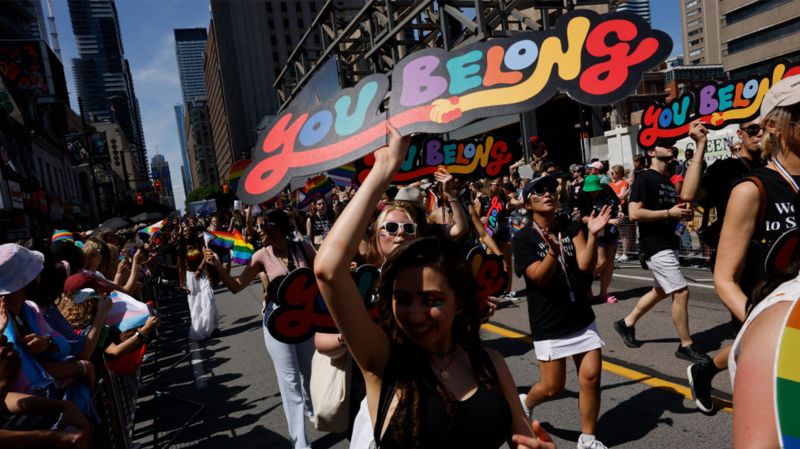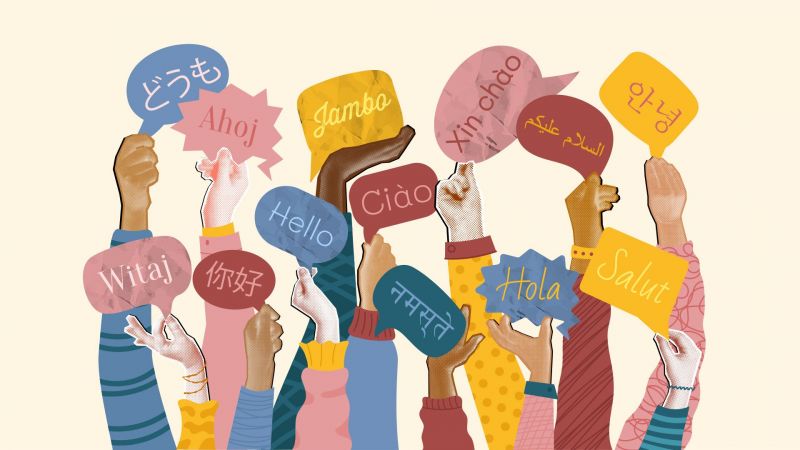Un-Prideful Laws Send the Wrong Signals
How the sensibility behind anti-LGBTQ+ legislation can seep into the workplace

It is Pride Month, a time associated with all things in celebration of the LGBTQ+ community. Usually it is a bright and hopeful four weeks, and no doubt will be again this year. Still, it is tough to ignore that big legislative shadow darkening the festivities.
Since the beginning of 2023, more than 500 bills have been tabled in the U.S. that the American Civil Liberties Union call “anti-LGBTQ+”. Almost 40 have been signed into law so far. Some ban gender-affirming care or make it illegal for teachers to talk about gender identity and sexual orientation in class. Others allow the intentional misgendering of transgender and non-binary people.
Canada has not been immune to a similar, albeit more limited, legislative action. In Alberta, Premier Danielle Smith has proposed restrictions for youth seeking gender-affirming care. She has also introduced rules similar to those in New Brunswick and Saskatchewan that would require teachers to get parental consent before changing the names or pronouns of students under 16.
Such initiatives by lawmakers have a wide impact. As Smith School of Business Professor of Equity and Inclusion Eddy Ng has seen, the sentiments behind these types of laws can spill over into the wider culture, including the workplace. Now all of a sudden it might not be so rare to hear a co-worker casually using the f-word or your boss parroting a comedy podcaster’s most recent transphobic rant. “These laws help signal that it’s OK to discriminate,” says Ng.
They can also be a signal for LGBTQ+ workers to find employment in fields that tend to support their way of life. As Ng’s research shows, LGBTQ+ job seekers tend to gravitate to public and non-profit sectors because these fields are seen as safe havens.
The hit on health
The price for people who work outside those safe havens may involve having to conceal who they truly are. “If you’re somewhere you feel devalued and stigmatized, you’re probably going to try to engage in some type of identity management,” says Ng. “That creates a cognitive burden, and it can be really detrimental to yourself and your career.”
That cognitive load can be especially detrimental to one’s mental and physical health. Ng was recently part of a team of 13 researchers looking into past studies on the health impacts of anti-LGBTQ+ legislation. While none of the findings were necessarily surprising on their own, Ng says it was sobering to see them anthologized together.
You can read that anthology in the journal Occupational Health Science, but the short of it is that the researchers uncovered reams of evidence linking the stress caused by these types of laws to increased rates of anxiety, depression, suicidal thinking and other psychological distress in the LGBTQ+ community. They also found evidence for increases in mental health conditions such as generalized anxiety disorder and post-traumatic stress disorder.

There can be physical consequences to this legislative stress as well. Chronic stress can result in an accumulation of physiological strain for LGBTQ+ individuals. Systemic inflammation is a driver of health disparities among sexually-diverse and gender-diverse people.
But as the researchers point out, the LGBTQ+ population is not homogenous when it comes to work-related health challenges. Bisexual men, for instance, have reported more discrimination at work, more stress and more substance abuse and psychological distress than bisexual women. People who are transgender have been found to be the most violently, physically and psychologically targeted in the workplace.
Knowing these differences matters, says Ng, because it can help shape how organizations respond to the health needs of their different employees.
Where to start
In general, though, Ng says corporate efforts should begin with comprehensive workplace non-discrimination policies. This may seem obvious, he adds, but it is important because clear rules and clear consequences put everyone on the same page. And as research indicates, such policies enhance perceptions of job safety and security.
Evidence also shows that LGBTQ+ employee resource groups (ERGs) can be highly effective for creating more inclusive workplaces. ERGs provide safe spaces for LGBTQ+ employees to get together, discuss their experiences and work on diversity and inclusion initiatives for their organizations. “These are really critical because they allow people to speak about their experience without judgment and find strategies for countering some of the things they’re experiencing,” says Ng.
Diversity training can be another essential tool. Certain training strategies have been shown to be more effective than others — like combining diversity skills and awareness. The key is to focus on squashing stereotypes, says Ng. “Oftentimes people don’t know what they don’t know, and their stereotypes can be at the root of a lot of the discrimination we see. So having that training can help bring those stereotypes out and create awareness about how unfounded they are.”
Diversity training can also develop allies within organizations who are willing to stand up for their LGBTQ+ co-workers. It is most helpful if these allies are from the groups typically engaging in discrimination, says Ng. “Think about it: If I’m a stigmatized person without a voice and somebody attacks me, I’ll probably just stay silent. But somebody with that legitimacy, that clout who says, ‘Hey, that’s not acceptable behaviour,’ carries a lot more weight.”
The moral of the story here is for employers and allies to stay vigilant, Ng says. The recent wave of anti-LGBTQ+ legislation signals that there are, as he puts it, “intolerance pockets” throughout society, including in workplaces. “And so organizations need to know that they can actually have a lot of influence on ending this intolerance. They can’t stay silent. They have to stand up and say what’s not acceptable, that one’s identity is not a barrier but that one’s uniqueness adds to the organization.”





